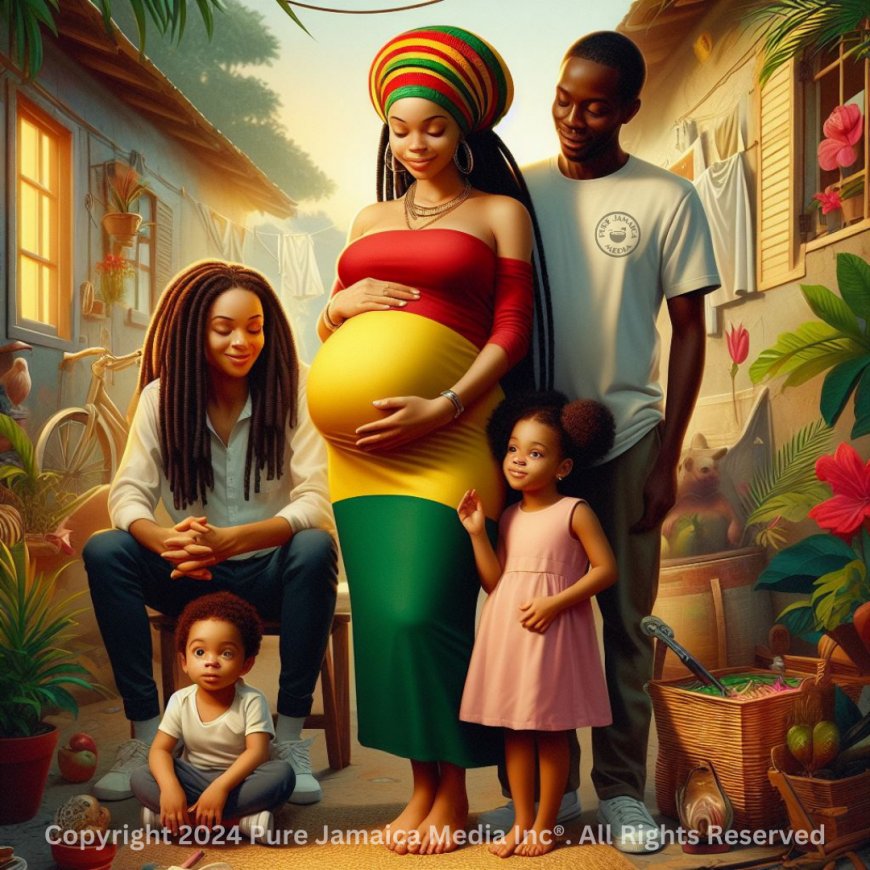What Jamaica's Declining Birth Rate Could Mean For The Island’s Future
Pure Jamaica Media focuses on the heart of social and cultural issues impacting the island nation. Today, we turn our attention to a recent report highlighting a significant decline in Jamaica's birth rate, prompting questions about its causes and potential implications.

Falling Numbers:
Jamaica has witnessed a remarkable decrease in its Total Fertility Rate (TFR) over the years, resulting in a significant impact on the country's population estimate. According to the recently released Reproductive Health Survey Jamaica (RHS) 2021 by the National Family Planning Board (NFPB), the TFR has dropped from 4.5 births per female in the period between 1973 and 1975 to 1.9 in 2021. This decline indicates a shift in societal dynamics and has implications for Jamaica's future population.
Delayed Childbearing and Educational Focus:
Professor Affette McCaw-Binns, an expert in Sexual and Reproductive Health and Epidemiology, presented the findings of the RHS survey. She highlighted that the age-specific fertility rates have decreased in all age groups, except for women aged 25-29 years. This trend suggests a delayed onset of childbearing, as women prioritize completing their education before starting a family.
Replacement-Level Fertility and the National Population Policy:
Professor McCaw-Binns explained that a TFR of 2.1 is considered the replacement level, representing the average number of children needed to maintain a stable population. With a TFR of 1.9, Jamaica's fertility rate falls below this threshold. She emphasized that the National Population Policy, established in 1983, aimed to achieve replacement-level fertility by providing high-quality family planning services.
Insights from the RHS Survey:
The RHS 2021 surveyed a total of 3,224 females and 1,784 males aged 15-49 years. Data collection took place between August 2021 and April 2022, with participants residing in rural areas (46%), urban centers outside the Kingston Metropolitan Region (32%), and within the KMR (22%). Among the participants, 61% were in a union (married, common-law, or visiting relationship), while 39% were not.
The RHS survey, led by principal investigators from the NFPB and the Statistical Institute of Jamaica (STATIN), aimed to assess progress towards replacement-level fertility, inform sexual and reproductive health policies, and update data on various health indicators. This 2021 RHS marks the eighth household survey conducted in Jamaica, with the first one dating back to 1975 as part of the World Fertility Survey of Reproductive Age Women.

Conclusion:
The decline in Jamaica's Total Fertility Rate, as revealed by the RHS 2021 survey, highlights a shift in societal norms and priorities. The trend of delayed childbearing, particularly among women focusing on education, has contributed to a decrease in the country's population estimate. Efforts to achieve replacement-level fertility through the National Population Policy continue to be vital in ensuring access to high-quality family planning services. As Jamaica navigates these demographic changes, it is crucial to monitor and adapt policies to meet the evolving needs of families and individuals.
Unpacking the Reasons: What's Driving the Change?
While the full picture remains complex, several factors are believed to be contributing to this trend. These include:
Increased access to family planning:Widespread availability of contraceptives and family planning services empowers women to make informed choices about their reproductive health.
Rising educational attainment: Higher levels of education, particularly among women, often lead to delayed childbearing and smaller families.
Urbanization and economic pressures: The shift towards urban living and the associated economic challenges can influence family planning decisions.
Changing societal values: Evolving perspectives on gender roles and career aspirations may contribute to a desire for smaller families.
Impact and Implications: Looking Ahead:
The declining birth rate presents both challenges and opportunities for Jamaica. While it may alleviate pressure on resources and infrastructure, it can also lead to an aging population with potential implications for workforce dynamics and social security systems.
Navigating the Future: A Call for Open Dialogue:
Understanding the reasons behind the declining birth rate and its potential consequences is crucial for informed policy development and societal dialogue. Open discussions involving diverse stakeholders are essential to ensure a future that is sustainable and equitable for all Jamaicans.
Join the Conversation:
Share your thoughts on the declining birth rate in Jamaica and its potential implications in the COMMENT SECTION BELOW. What are your hopes and concerns for the island's future?









